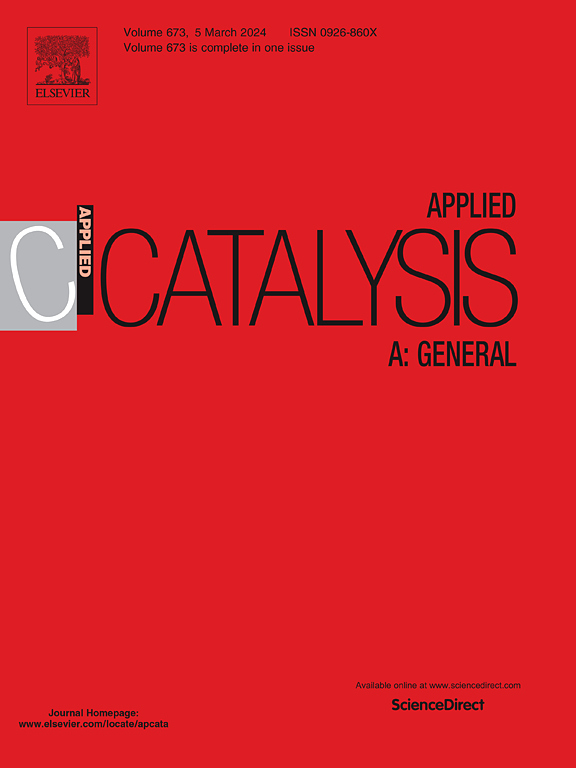Advanced sulfonated porous organic polymer catalyst HSO3-POP-TB for dimerization of isopentene
IF 4.7
2区 化学
Q2 CHEMISTRY, PHYSICAL
引用次数: 0
Abstract
The oligomerization of light olefins, such as isopentene, is crucial for producing valuable products like industrial chemicals in the petrochemical industry; however, developing efficient and stable catalysts remains challenging. In this study, we synthesized a sulfonated porous organic polymer, HSO3-POP-TB, via Friedel-Crafts alkylation using 1, 3, 5-triphenylbenzene (TB) and 4, 4’-dichloromethylbiphenyl (BB), followed by chlorosulfonic acid (HSO3Cl) sulfonation. The strong acidity and unique micro-/mesoporous structure of HSO₃-POP-TB are key to achieving high isopentene conversion and excellent dimer selectivity. Optimized HSO3-POP-TB demonstrated exceptional catalytic performance, with an isopentene conversion rate of 81.7 % and 95.0 % selectivity for the dimer product at 70 °C, surpassing conventional solid acid catalysts. Additionally, HSO3-POP-TB exhibited remarkable thermal stability and acid resistance, maintaining high activity over five reaction cycles without significant efficiency loss. These results highlight the potential of HSO3-POP-TB as a promising catalyst for the efficient and sustainable conversion of light olefins into valuable chemicals, addressing economic and environmental concerns.
求助全文
约1分钟内获得全文
求助全文
来源期刊

Applied Catalysis A: General
化学-环境科学
CiteScore
9.00
自引率
5.50%
发文量
415
审稿时长
24 days
期刊介绍:
Applied Catalysis A: General publishes original papers on all aspects of catalysis of basic and practical interest to chemical scientists in both industrial and academic fields, with an emphasis onnew understanding of catalysts and catalytic reactions, new catalytic materials, new techniques, and new processes, especially those that have potential practical implications.
Papers that report results of a thorough study or optimization of systems or processes that are well understood, widely studied, or minor variations of known ones are discouraged. Authors should include statements in a separate section "Justification for Publication" of how the manuscript fits the scope of the journal in the cover letter to the editors. Submissions without such justification will be rejected without review.
 求助内容:
求助内容: 应助结果提醒方式:
应助结果提醒方式:


